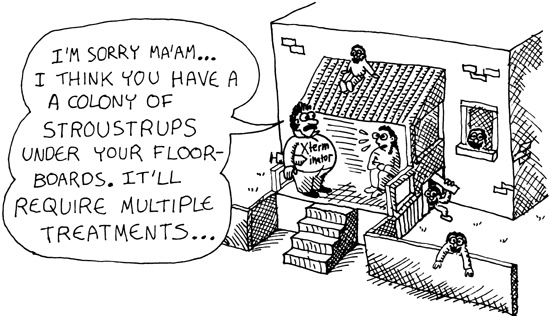I’ve said that Lisp is a particularly powerful language. So what were the key insights that John McCarthy (and the other, later innovators of Lisp) had that made this power possible?
To make a programming language powerful, you need to make it expressive. Having an expressive language means that you can do a lot of stuff with very little actual code. But what traits does a language need to make this possible? I think there are two that are most important.
One trait is a lot of features built into the language. That way, for most things you need to get done, someone has already performed some of the work for you, and you can leverage that work to make your own code look pithy. Many modern languages have this trait. The Java language, for instance, is renowned for powerful libraries that, for example, let you acquire data from another PC over a socket with ease.
The second trait that gives a language power is letting you muck around inside it as deeply as possible to make it do your bidding. That way, even if the designers of the language never conceived of what you’re trying to do, you can make your own changes to the language until it does exactly what you need to solve your problems elegantly. This trait is much more difficult to provide in a language. Suppose you wanted to add something like nested function definition support to Java. If you know Java well, thinking about how to add such support is in the realm of nightmares.
The reason most languages aren’t good at supporting both of these traits simultaneously is that they conflict with each other. The richer a language is at the start, the more complicated it is. And the more complicated the language, the more painful it is to muck with that language. That’s why making your own changes to the most mature programming languages is close to impossible.
Of course, if you try hard enough, you can always make fundamental changes to any language. For instance, when C++ was developed, it originally took the form of a C preprocessor. A special C program was written that could take code written in the new C++ dialect and convert it into plain-old C, which you could then just run through a standard C compiler. This is how Bjarne Stroustrup, the inventor of C++, was able to tweak the C language and add features to turn it into his own. However, writing a translator such as this is an extremely difficult and tedious process that you would consider only as a last resort.
In contrast, Lisp languages make it extremely easy for an experienced Lisper to alter the compiler/interpreter that runs a program, while still supporting rich language features with extensive libraries. In fact, messing around with the language within Lisp is easier than in any other language ever created!
For example, writing a function in Lisp to calculate the distance between two points would be simple, as in most other languages. But an experienced Lisper would find it equally easy to invent a new way to nest function definitions or devise a funky if-then command. Even writing your own object-oriented programming support inside Lisp is not complicated (and most Lispers have probably done so at some point). In Lisp, everyone gets to be a mini-Stroustrup!
How does Lisp make this neat feat possible? One of Lisp’s core characteristics is that writing a Lisp directly in Lisp is, itself, unbelievably simple. It turns out that this is the key property that allows Lisp to break the paradox of the two traits. By starting out as a language that could perform a cool mathematical trick of elegantly writing itself, it ended up possessing the very property needed to be both feature-rich and tweakable. That, in turn, makes it the perfect tool for actually writing just about any kind of program at all!
Think of it this way: Give a programmer a fish command in his programming language, and he will eat Chinese takeout and drink Jolt for a day. Give a programmer a programming language that allows him to write his own fish command, and he’ll eat Chinese takeout and drink Jolt for a lifetime (which, admittedly, would probably be cut short by nutritional deficiencies, and let’s not even discuss the probable heart arrhythmias).
So, now you have an idea of why Lisp is a very cool and very unusual programming language. It has a long and atypical history compared with most programming languages. Most languages came from the world of engineering, whereas Lisp originated from a more mathematical background. It has a lot to offer to those willing to spend a little time learning something new.

